We discussed the size of
the aviary in "general"
Here, we want to focus
more on the materials and equipment of the aviaries.
An important point is that
the materials used should be free of heavy metals, most particular zinc
When purchasing you should
explicitly point out that no zinc should be present in the coating.
Cages of brass (= alloy
of zinc and copper) should not be used either. Aviaries decorated with
turrets and overlaying extensions are not suitable for the vigorous and
agile kakariki.
When buying an aviary/cage,
you should also make sure that the bottom grill can be removed without
creating a gap big enough for the bird to escape.
A gap should not be wider
than 2cm to prevent a kakariki from being able to sticking his head through.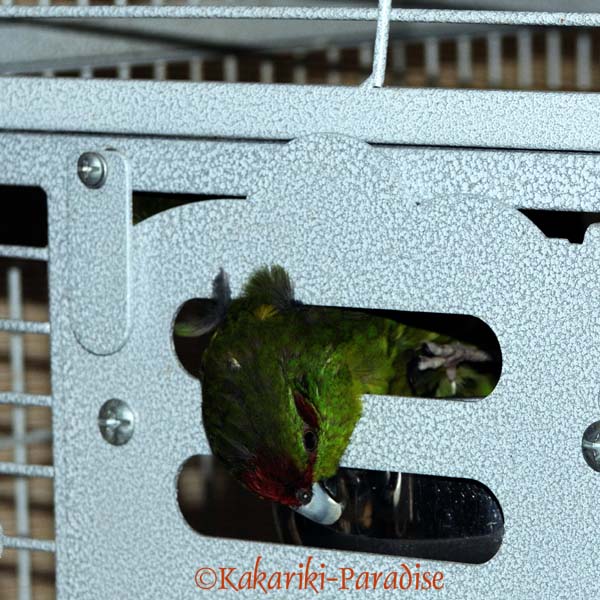 If,
in those unfortunate circumstances, the bird should panic, chances are
it won’ t be able to release himself. If,
in those unfortunate circumstances, the bird should panic, chances are
it won’ t be able to release himself.
See pic to the right, the
gap in the feeding shaft had to be widened using a screwdriver as wig in
order for Maya to be able to free herself.
Floor
grills are not suitable for kakariki because they love to forage on the
floor looking for food.
Here are some pictures
that show how much they love to scratch and play with the bedding at the
bottom of this aviary. |
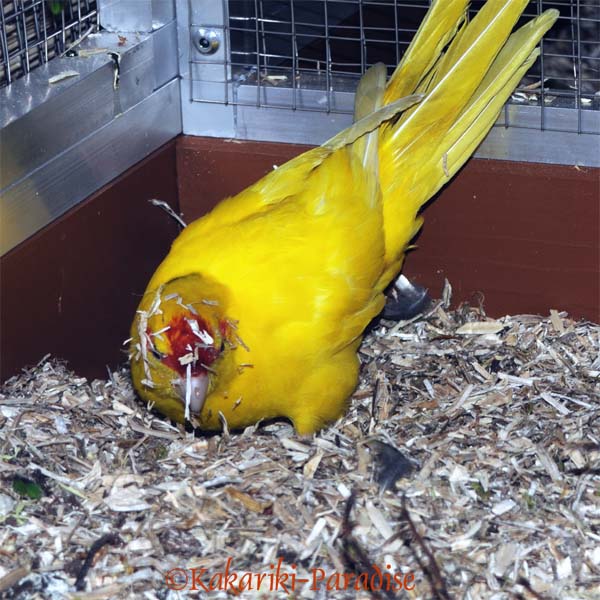 |
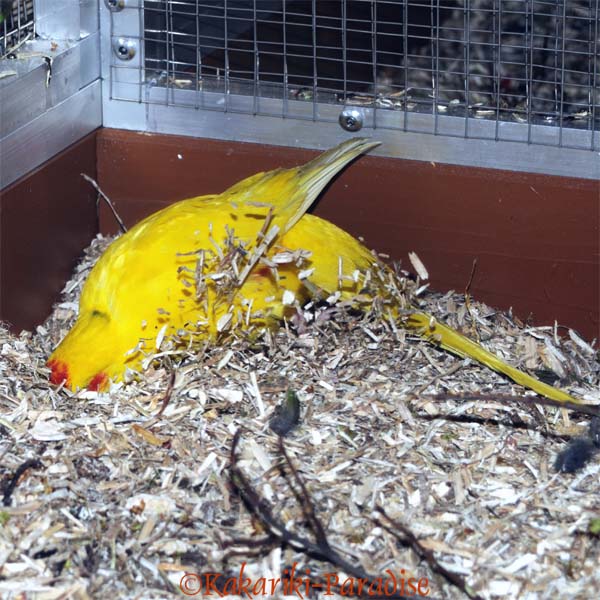 |
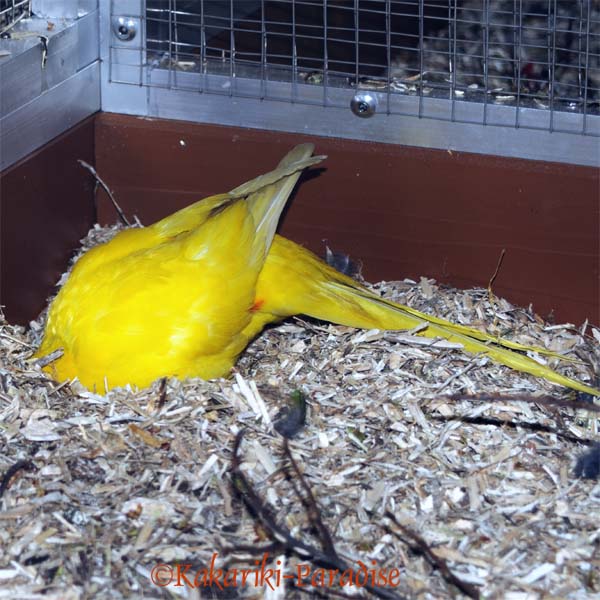 |
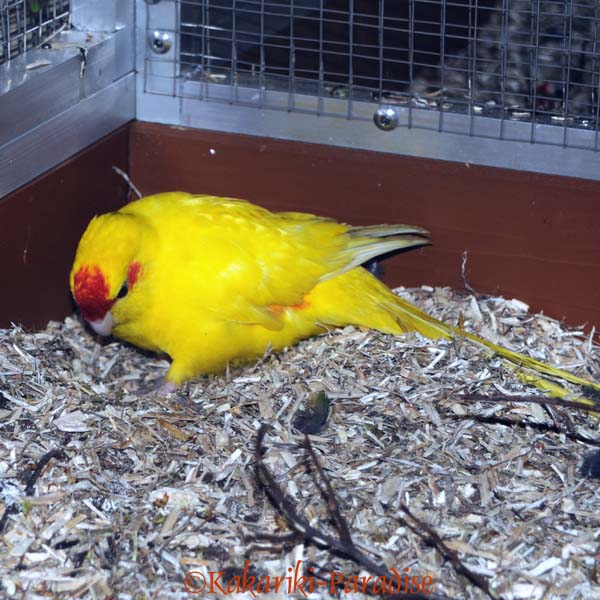 |
You could decide on building
your own aviary. Use stainless steel wire.
For the frame you could
use either wood or pre fab aluminum square tubes.
Indoors the wood does not
necessarily have to be impregnated. Since kakariki master in spreading
the juices of fruit etc. all over the place, a lacquer layer simplifies
the cleaning of the aviary.
Use certified, children
safe, acrylic paint .
Even olive oil or linseed
oil can be used. However, if the birds have access to the balcony, impregnation
is necessary.
The basic equipment should
consist out of swings and natural wooden- or mineral perches.
Perches should vary in
diameter and not have too smooth a surface.
Tubes made of cork are
often used as sleeping quarters and serve as occupational therapy (see
also "Behaviour").
Leave the birds enough
room to romp!
There is a heated debate
going on about cage bedding's. We like to use
a mix containing bird sand, wood pellets and/or beech chips.
The latter not too close
to a water bowl because of the risk of mold. Hemp bedding has proofed itself
as well and is our most common used cage bedding.
We place the waterbowls
on large coasters to avoid/reduce the risk of wet bedding. (please check
"bathing"). After cleaning the aviary,
we always mix a few grains of food into the bedding, in order to meet their
need to grubb and scratch. |